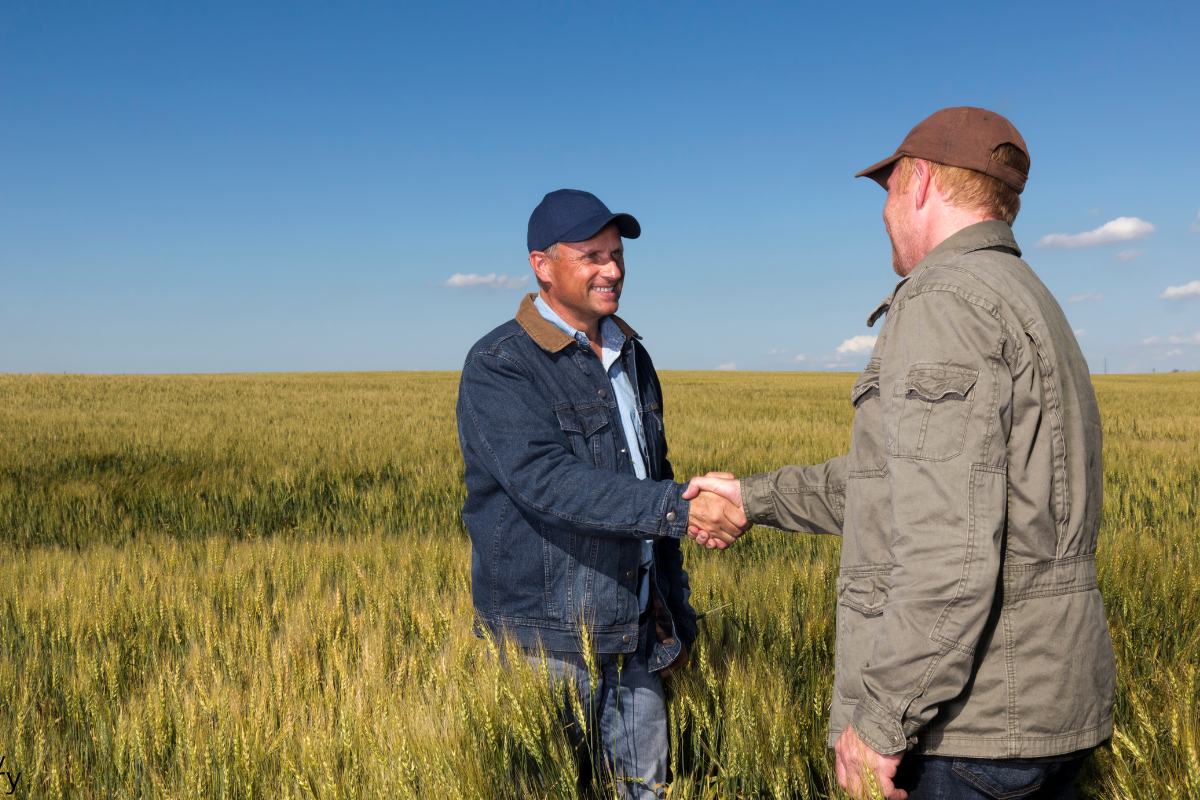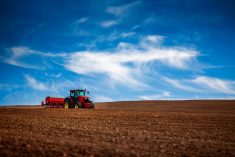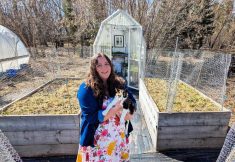If the taste of sour fried pork with mango and maple syrup is hard to imagine, what about an Asian shrimp omelet with tomato-maple chili sauce?
These and similar recipes are among the creations of chef Yoko Arimoto, a Japanese food celebrity hired to promote maple syrup in a country that may not be known for its sweet tooth, but where the quest for quality and refinement is a cultural trait that’s too ingrained to falter in tough economic times.
Suddenly, fine dining in the Land of the Rising Sun is acquiring a Canadian accent.
Read Also

Are you ready for farm succession?
What motivates some farmers to make a succession plan while others don’t seem worried.
It isn’t by accident.
In 2008, Japan imported a total of 8.6 million pounds of maple syrup, most of it produced in Canada. That’s being called a phenomenal success story, considering the Japanese boosted their syrup consumption by 7.2 per cent in a year when terrible spring conditions in Eastern Canada led to a desperate crop shortfall and a sharp surge in prices.
The Japanese bought anyway.
For Quebec maple syrup producers, this is being seen as a clear indication that their export-based market expansion strategy is on the right track. The Fédération des producteurs acéricoles du Québec (FPAQ — Quebec’s maple syrup producer union) started promoting maple syrup on a large scale in Japan in 2005. Budgets have grown to about $1 million a year.
Half that funding comes straight from the federal government. The second half comes from a levy of two cents per pound that Quebec producers pay every time they sell a gallon of syrup through their union.
In the early 2000s, maple syrup production exceeded world demand. High stocks caused prices to plunge. Quebec producers reacted with the creation of a highly controversial quota system. Farmer-to-consumer sales remain unrestricted, but production for wholesale and retail are now strictly regulated.
Controlling these sales of maple syrup helped stabilize prices. Just like dairy farmers who invest millions to promote milk consumption, maple syrup producers also figured they needed marketing campaigns if they wanted overall sales to increase. The obligatory two-cent-per-pound contribution is lot of money, but this is what it takes to stimulate demand, says FPAQ president Serge Beaulieu.
The collective approach to supply management and promotion is working very well, Beaulieu says. The FPAQ’s efforts to “deseasonalize” consumption has created immense success. From being a rite of spring, maple syrup has also become a popular Christmas treat, and the campaign is now focused on building an image of maple syrup as the finest of all sweeteners and the perfect substitute to refined sugar in any recipe, at any time of the year.
Even with that success, however, the Quebeckers were also adamant that they launch a multi-prong marketing strategy, so customers would develop an even
stronger bond to a sweetener that is a brand new experience for many consumers, even here in Canada.
Funding was therefore also directed towards nutritional research. It turns out maple syrup is a lot more than a 100 per cent natural product. It contains stunningly high concentrations of vitamins including riboflavin, plus minerals including manganese and zinc, along with significant traces of magnesium, calcium and potassium.
Most interestingly, maple syrup was found to contain phenolic compounds with antioxidant and anti-cancer properties. Now that, says Beaulieu, is something to boast about.
Japan has been importing maple syrup for over 30 years, but the romantic image of plaid-shirted Canadians tapping trees in mid-winter and boiling the sap into syrup never captured the Japanese imagination. At least, it didn’t build maple syrup a place in the kitchen. Instead, much of the maple syrup stayed in tiny maple-leaf shaped souvenir bottles sold in tourist destinations such as Banff, largely because the Japanese didn’t know how they would use it, or why.
So, while the rugged outdoors image of maple syrup seemed like the obvious promotion tool, it was a case of being ethnically tone deaf. The advertisements that worked so powerfully in Canada were having little impact in Japan.
Instead, the language that the Japanese want to speak is health, and now, with new information about nutritional value, the FPAQ has a powerful tool to promote syrup to one of the most health-conscious populations in the world.
“Our product is a perfect fit with the Japanese mentality,” Beaulieu now says. “The Japanese are really fond of natural products.”
The U. S. has always been the most important maple syrup importer, with over 75 per cent of Canada’s maple exports heading south of the border.
Even with that market, however, the Canadian maple marketplace was foundering just five years ago.
The FPAQ’s massive investment in Japan was adopted as a strategy to strengthen market stability and prices by diversifying exports and depending less on the United States, Beaulieu says.
For several years, Japan remained tied in second place with Germany in the list of maple product importers. Last year, as prices soared, sales dropped in Germany but kept increasing in Japan. For the FPAQ, this is a confirmation that Japan was the right place to invest.
The FPAQ has retained the services of a Japanese marketing agency since 2005. Activities include press trips to Quebec, a maple festival in Tokyo restaurants and recipe books by celebrities like Arimoto. Maple syrup is promoted as a generic item. Help to Canadian exporters only comes in the way of networking events with Japanese buyers.
In 2005, maple product exports to Japan jumped to six million pounds from 4.3 million pounds the previous year. Between 2004 and 2008, the value of Japanese maple imports grew from $12.3 million to over $22 million.
Maple syrup remains a luxury item in Japan, says exporter Luc Bergeron, whose L. B. Maple Treats products have been crossing the Pacific Ocean for over 15 years.
The downside to the FPAQ’s involvement is that several newcomers are trying their luck on the Japanese market.
Exporters aren’t eager to reveal much about the secret of their success in Japan. “You need patience,” Bergeron says. “Before doing business with the Japanese, you must first develop a relationship.”
Eating habits in Japan are totally different, says Jerry Kless, from Citadelle, Canada’s largest maple product exporter. “Japanese are not pancake eaters,” he says.
Exports are the only way to boost maple syrup production, says producer and past president of the FPAQ Pierre Lemieux. “Quebeckers could never eat all the syrup they produce.”
The FPAQ will soon start a new round of U. S. promotions. This time, the focus will be on the healthy side of a natural product, just like the Japanese campaign.
The single largest obstacle to increasing maple syrup production is the size of the fund available for promotion, says Beaulieu, who puts in 28,000 tapholes every spring at his Ormstown sugar bush, south of Montreal.
In the last two years, quota for six million new tapholes was allocated. Part of it was given to 400 new operations throughout Quebec.
According to Beaulieu, the province’s maples are not even close to being tapped to their full potential. Production could easily be doubled if needed, he says. However, careful planning is required, because the deeper you enter the maple bush, the higher the cost for infrastructure like roads and electricity.
In 2008, local sales and exports were hampered by a record low production caused by waist-high snow around maple trees. This year is all the opposite. “We’ve just had an exceptional spring. Maples have produced like we’ve never seen before,” Beaulieu told COUNTRY GUIDE.
There is optimism in the air, Beaulieu says. This year’s crop is expected to bring stocks back to normal levels and to provide the stability and additional revenues for producers to invest.
In the meantime FPAQ says watch for maple sashimi at your local sushi shop. CG
Even with that market, however, the Canadian maple marketplace was foundering just five years ago.
The FPAQ’s massive investment in Japan was adopted as a strategy to strengthen market stability and prices by diversifying exports and depending less on the United States, Beaulieu says.
For several years, Japan remained tied in second place with Germany in the list of maple product importers. Last year, as prices soared, sales dropped in Germany but kept increasing in Japan. For the FPAQ, this is a confirmation that Japan was the right place to invest.
The FPAQ has retained the services of a Japanese marketing agency since 2005. Activities include press trips to Quebec, a maple festival in Tokyo restaurants and recipe books by celebrities like Arimoto. Maple syrup is promoted as a generic item. Help to Canadian exporters only comes in the way of networking events with Japanese buyers.
In 2005, maple product exports to Japan jumped to six million pounds from 4.3 million pounds the previous year. Between 2004 and 2008, the value of Japanese maple imports grew from $12.3 million to over $22 million.
Maple syrup remains a luxury item in Japan, says exporter Luc Bergeron, whose L. B. Maple Treats products have been crossing the Pacific Ocean for over 15 years.
The downside to the FPAQ’s involvement is that several newcomers are trying their luck on the Japanese market.
Exporters aren’t eager to reveal much about the secret of their success in Japan. “You need patience,” Bergeron says. “Before doing business with the Japanese, you must first develop a relationship.”
Eating habits in Japan are totally different, says Jerry Kless, from Citadelle, Canada’s largest maple product exporter. “Japanese are not pancake eaters,” he says.
Exports are the only way to boost maple syrup production, says producer and past president of the FPAQ Pierre Lemieux. “Quebeckers could never eat all the syrup they produce.”
The FPAQ will soon start a new round of U. S. promotions. This time, the focus will be on the healthy side of a natural product, just like the Japanese campaign.
The single largest obstacle to increasing maple syrup production is the size of the fund available for promotion, says Beaulieu, who puts in 28,000 tapholes every spring at his Ormstown sugar bush, south of Montreal.
In the last two years, quota for six million new tapholes was allocated. Part of it was given to 400 new operations throughout Quebec.
According to Beaulieu, the province’s maples are not even close to being tapped to their full potential. Production could easily be doubled if needed, he says. However, careful planning is required, because the deeper you enter the maple bush, the higher the cost for infrastructure like roads and electricity.
In 2008, local sales and exports were hampered by a record low production caused by waist-high snow around maple trees. This year is all the opposite. “We’ve just had an exceptional spring. Maples have produced like we’ve never seen before,” Beaulieu told COUNTRY GUIDE.
There is optimism in the air, Beaulieu says. This year’s crop is expected to bring stocks back to normal levels and to provide the stability and additional revenues for producers to invest.
In the meantime FPAQ says watch for maple sashimi at your local sushi shop. CG














